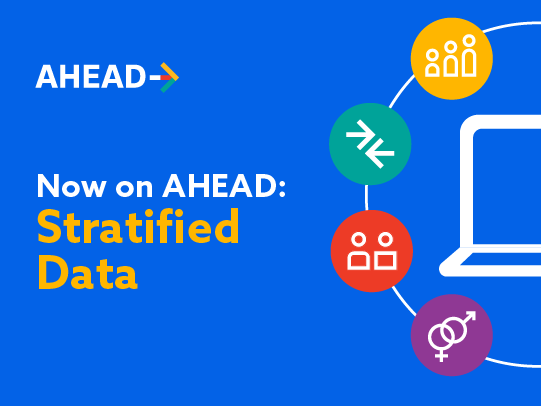AHEAD Releases Stratified Data at State and Local Levels
Topics

America’s HIV Epidemic Analysis Dashboard (AHEAD) now allows users to view some EHE indicator data stratified by age, race/ethnicity, sex at birth, and transmission category at the state and county levels.
Access to more localized EHE indicator data stratified at 1, 2, and 3 levels (where available for release) gives stakeholders the ability to see which populations are disproportionately impacted by HIV. By analyzing the stratified data on AHEAD, jurisdictions can better understand how different populations are uniquely impacted by HIV, as well as the modes of transmission by which they are acquiring HIV.
Ending the HIV epidemic will require a nuanced understanding of the risks and health impacts of people in their intersectional identities – such as combinations of race/ethnicity and age. Stratifying the data may show, for instance, that in one EHE priority area, young Black/African American people (race/ethnicity and age, 2-way stratification) are achieving and maintaining viral suppression at lower rates than young White people in that same area; or that young people are far more likely to receive diagnoses than people over 60 (age, 1-way stratification). These data give stakeholders the basis to develop more culturally appropriate, precise interventions and direct resources more efficiently.
Stakeholders visiting the Dashboard to view the new stratified data can:
- Examine the difference or variation in HIV burden of disease by age, sex at birth, race, and transmission category (where available);
- View the relationship between demographic variables and transmission categories;
- Use the stratified data to develop, customize, or enhance jurisdiction-specific interventions and services;
- Review data to inform strategic planning and resource allocation to better serve emerging and diverse populations in a meaningful way; and
- Compare EHE progress to jurisdictions with a similar demographic profile.
Explore the new stratified data on AHEAD.